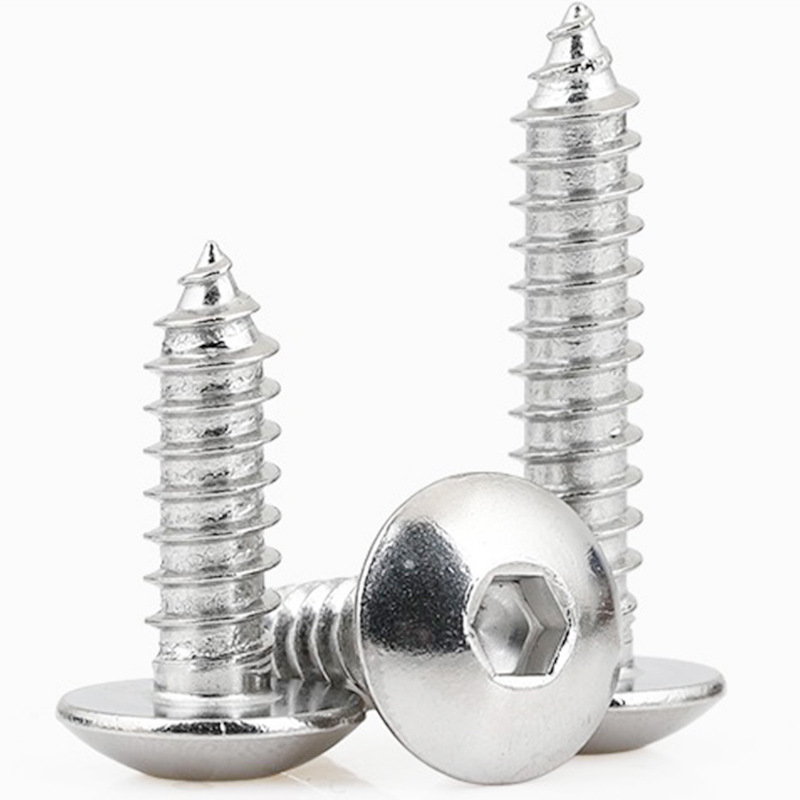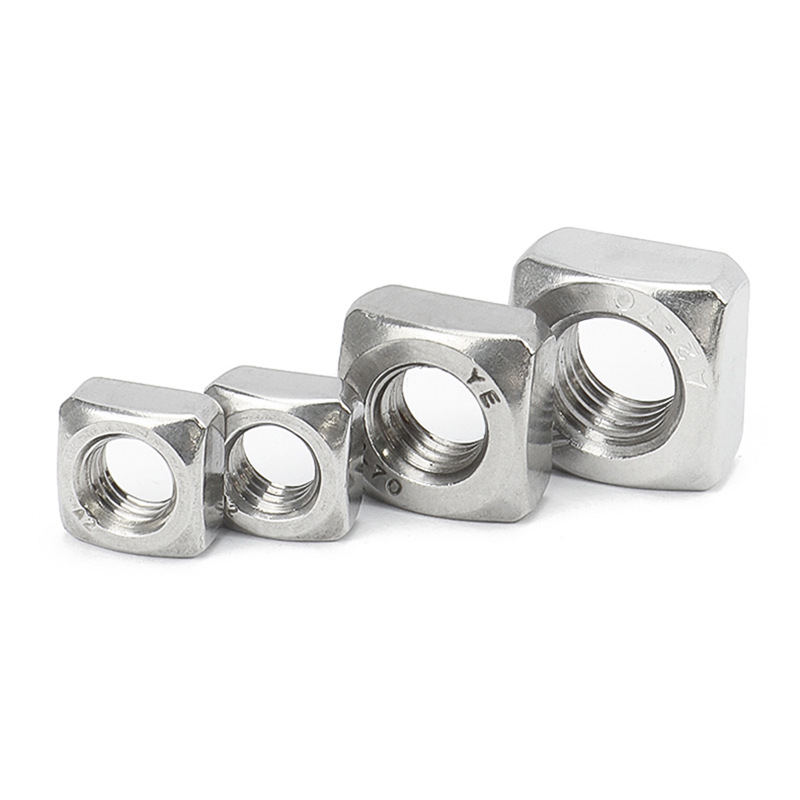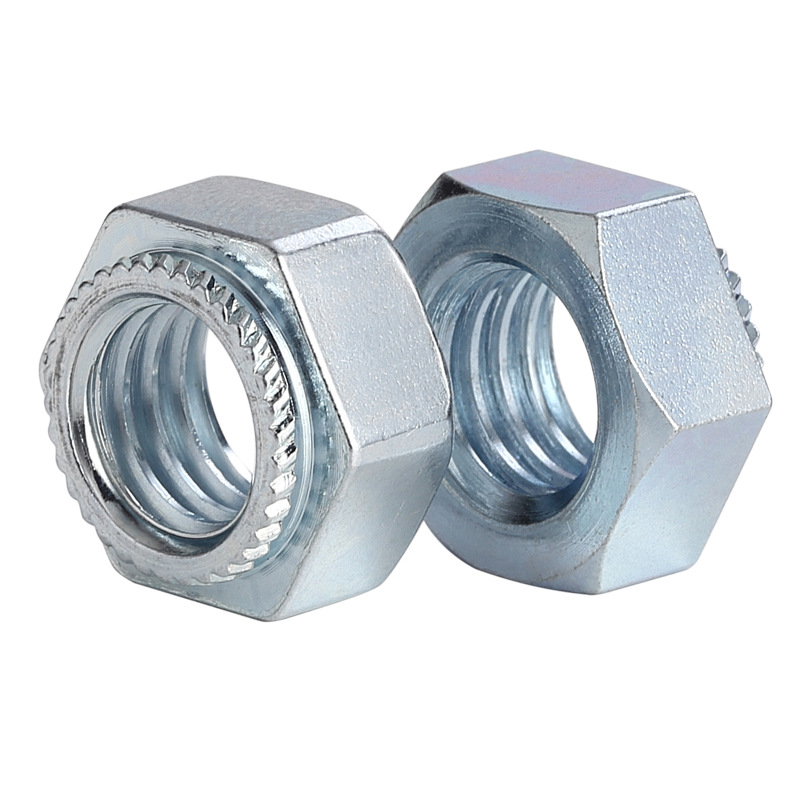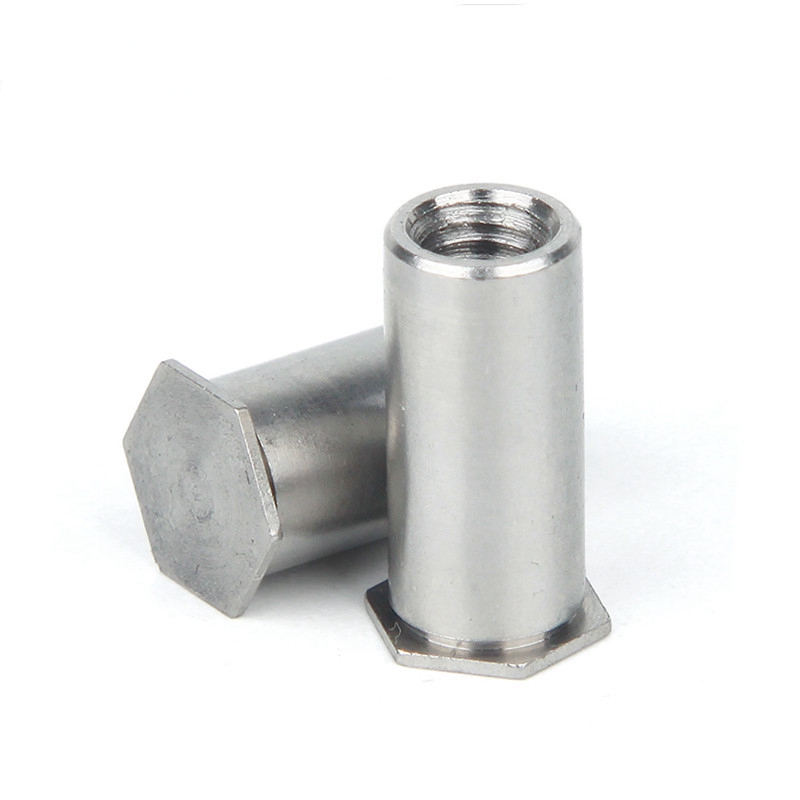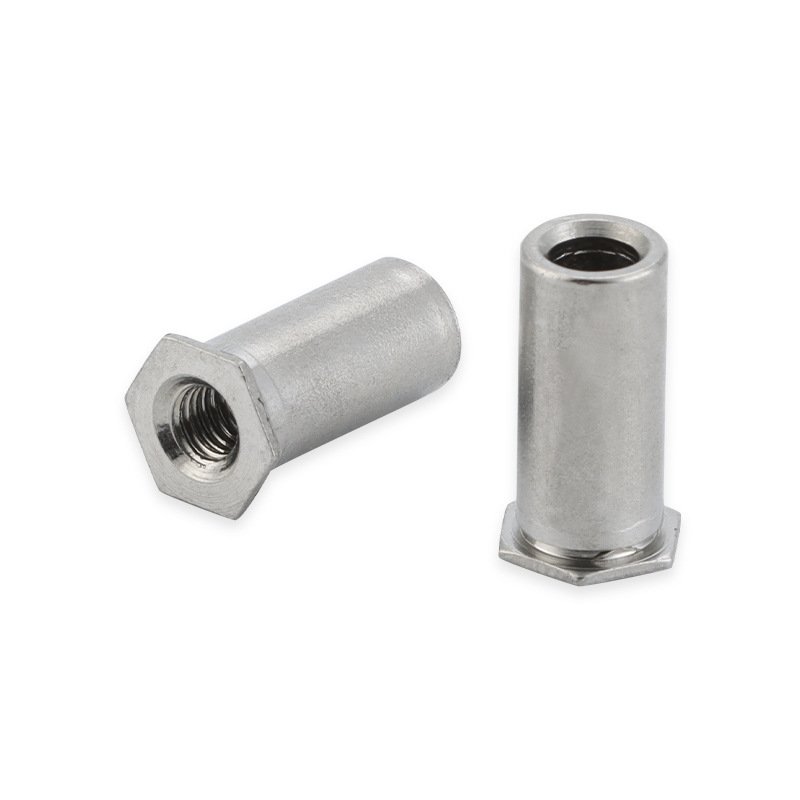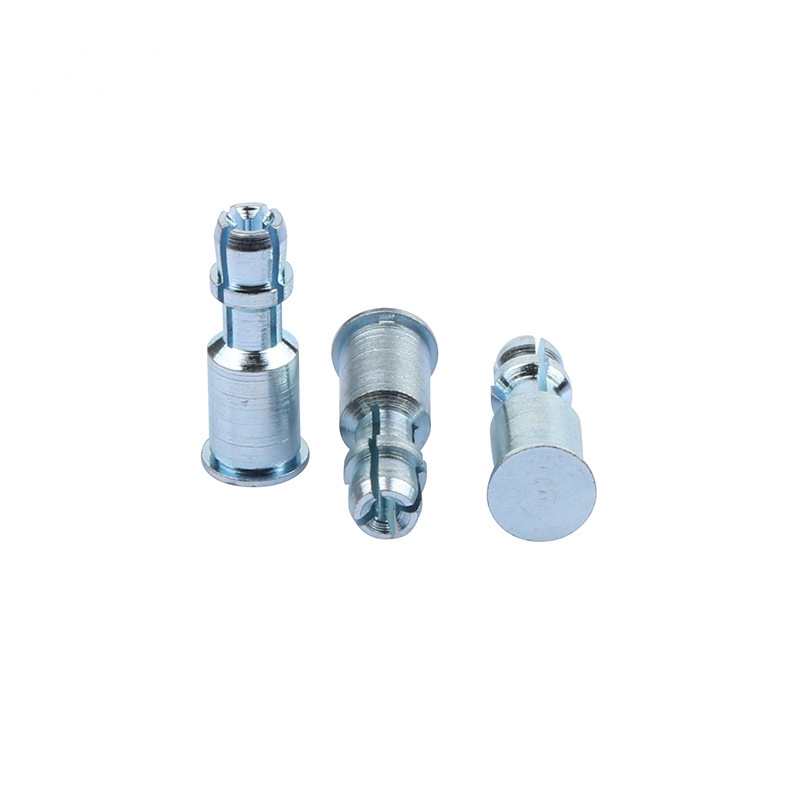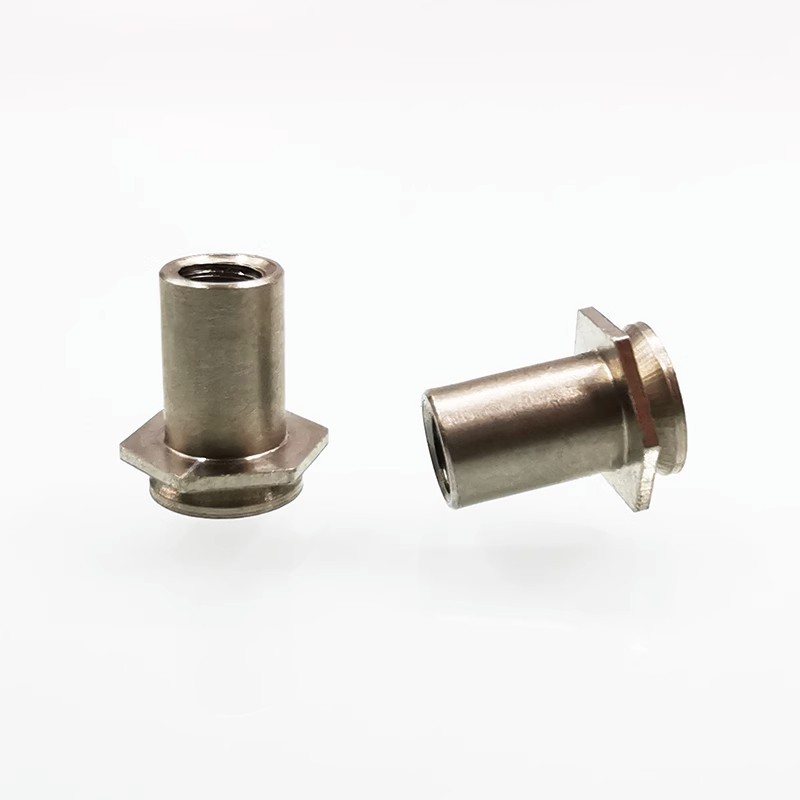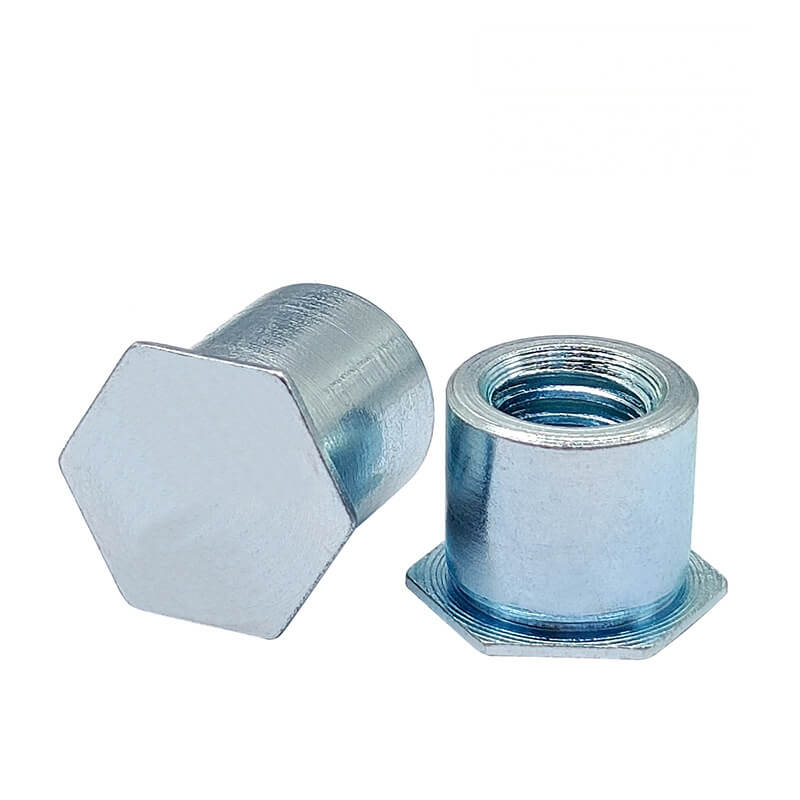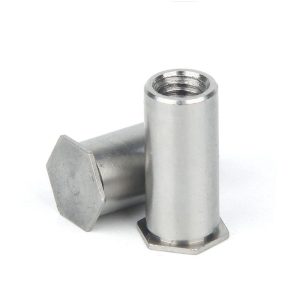
Self-clinching nut standoffs, also known as self-clinching studs or nut standoffs, are divided into through-hole nut standoffs (SO) and blind-hole nut standoffs (BSO). They are a type of fastener used in sheet metal, thin plates, chassis, and cabinets. The self-clinching nut standoff has a hexagonal shape at one end and a cylindrical shape at the other end. There is a back-cut groove between the hexagonal side and the cylindrical shape, and its inner shape is an internal thread. The hexagonal head is pressed into the preset hole of the thin plate by a press (the aperture of the preset hole is generally slightly larger than the cylindrical outer diameter of the self-clinching stud), causing plastic deformation around the hole. The deformed part is squeezed into the back-cut groove of the self-clinching nut standoff, so that the self-clinching nut standoff is riveted to the thin plate, thereby forming an effectively fixed internal thread on the thin plate.
What is a blind threaded standoff? As the name suggests, it refers to whether the hole in the stud is connected. If it is not connected, it is called a blind threaded standoffs, and if it is connected, it is a through hole thread standoffs.
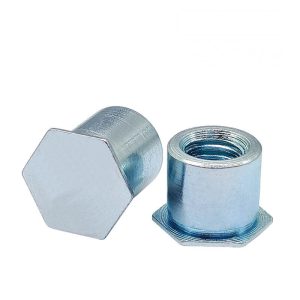
So when should blind hole self-clinching studs be used? This mainly depends on how the customer uses it, and is determined by the performance and requirements of the product accessories. Based on years of industry experience, if the stud is too long, it is generally difficult to pass through the hole and it is not easy to produce. Therefore, blind hole self-clinching studs are more commonly used for longer studs.
Materials of standoffs: carbon steel, stainless steel, and stainless iron.
Model of blind hole pressure riveting studs: BSO BSOS BSOA
Specifications of pressure riveting studs: M2-M6.
Length of pressure riveting studs: 3mm-40mm.



